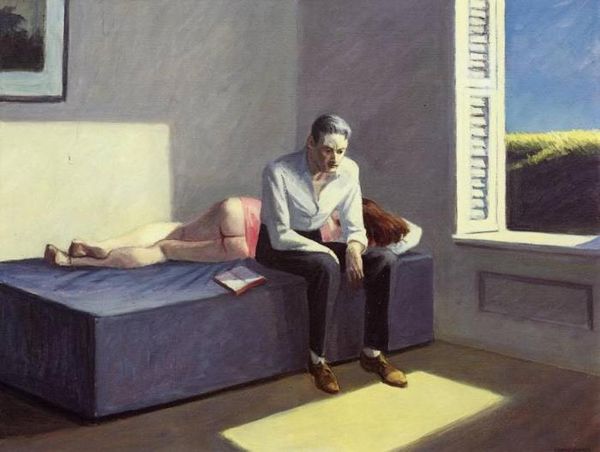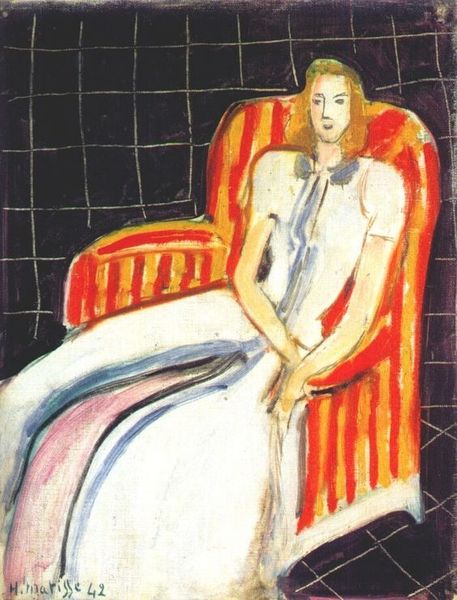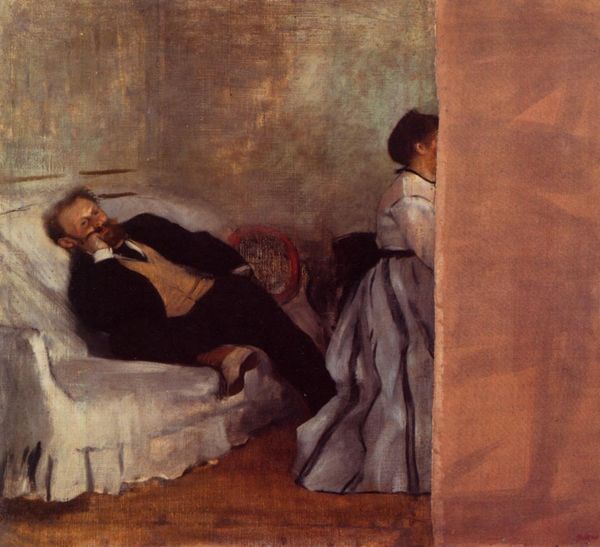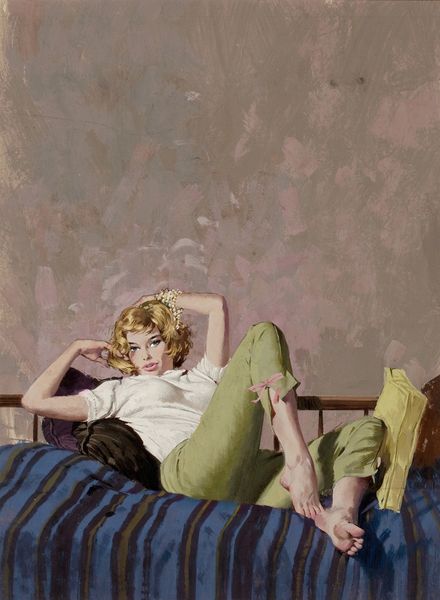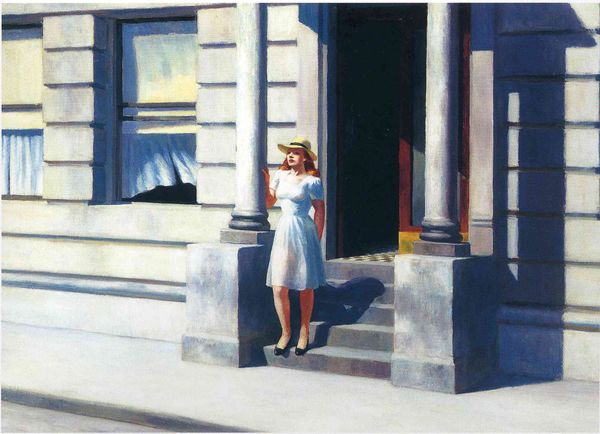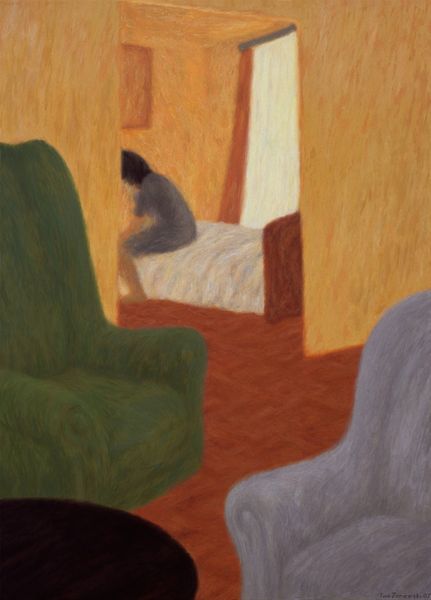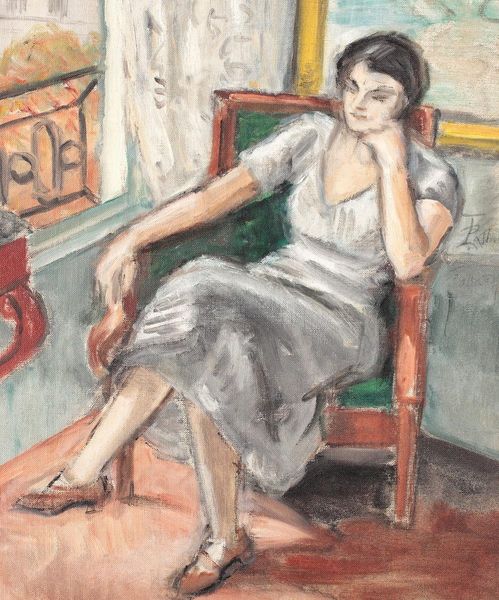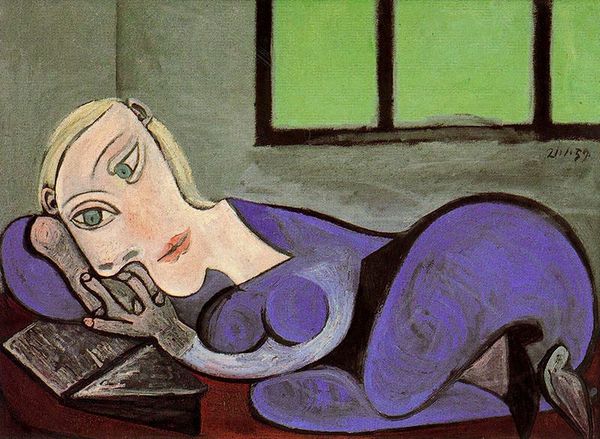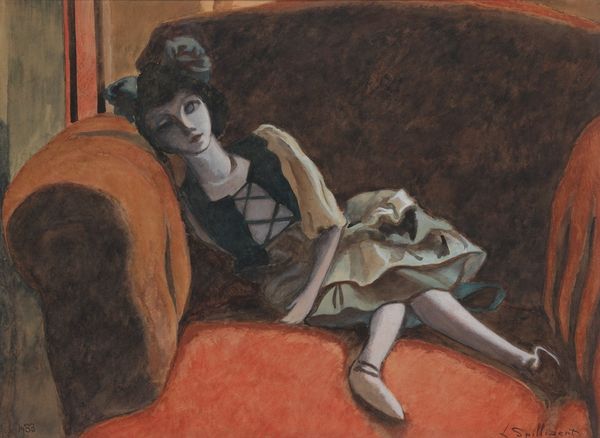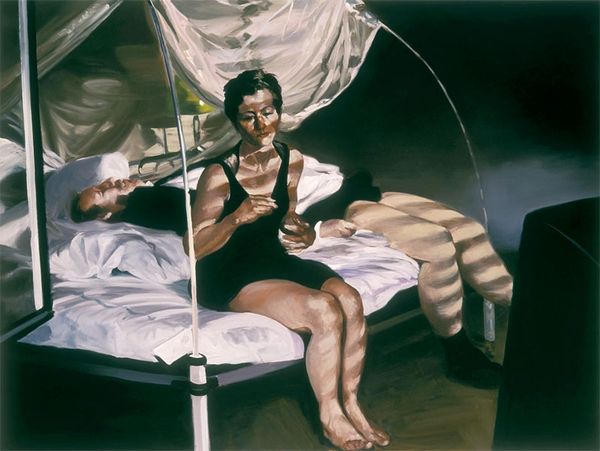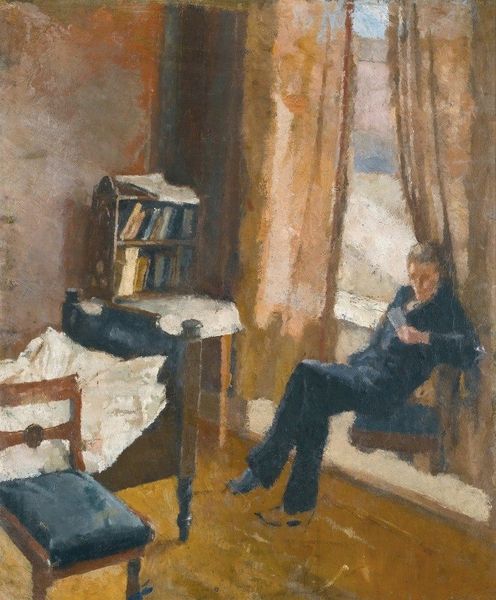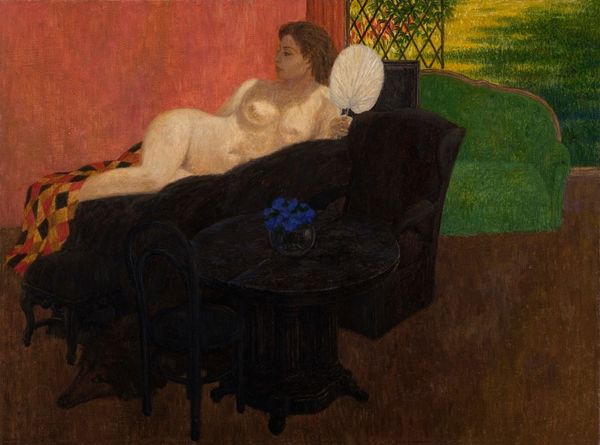
Dimensions: 101.6 x 152.4 cm
Copyright: Edward Hopper,Fair Use
Curator: Let's take a moment to appreciate Edward Hopper's "Intermission," painted in 1963. What is your first take? Editor: The cool blues and browns create such a somber and detached mood; there's an undeniable sense of stillness emphasized by the very ordered compositional style of the work. Curator: Hopper, in the painting, presents a woman during a break, possibly in a theatre or cinema; we see this figure against an austere background, in what could also be an interior architectural scene with doors or hallways, or other liminal architectural space. She is seemingly taking an interlude or time to collect her thoughts. Consider that during this time, gender roles were becoming increasingly challenged, and here's a lone female figure in that time, presented between two possible realities. It really provokes reflections about her identity and place within that cultural context. Editor: Precisely! This scene shows a rather restricted palette, emphasizing the lines that generate a quietness within the painting itself; what Hopper may communicate here is not about what's on stage but that private instant during the intermission, that break from the spectacular itself. It's where thoughts convene and shape our experience. Curator: Absolutely. There's a palpable sense of isolation, something quite characteristic of Hopper's oeuvre and indicative of a broader societal shift, in the wake of the postwar era. Do you think her gaze reveals some level of hope or a sense of resignation toward life? Editor: I see more resignation, that is clear in the angle in which her neck drops slightly forward, in her lack of interaction with anything around her and how she sits straight while never resting herself on the seat. Although what her gaze projects as "resignation," may just be read as fatigue or an introspective trance in the moment of this intermission. Curator: This reminds us that "Intermission," as many other works by Hopper, transcends any singular reading. It continues to speak about transition and social change today, echoing diverse, deeply human sentiments and lived experiences. Editor: It offers a very quiet reflection on the act of perceiving something spectacular, like a stage play, while remaining conscious of how the structural arrangement shapes meaning in its entirety. The details reveal what we tend to leave at the margins, even inside ourselves.
Comments
No comments
Be the first to comment and join the conversation on the ultimate creative platform.
